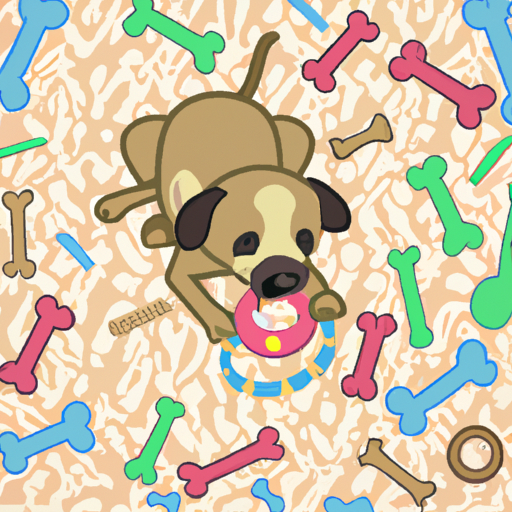As a caregiver, understanding your puppy’s teething process is key to ensuring they grow into healthy, happy dogs. Let’s delve into this engaging topic and explore this important phase in your furry friend’s life.
What is Puppy Teething?
Teething is a natural stage of growth for puppies, just like it is for human babies. Starting from 2 to 3 weeks old, your puppy’s baby teeth will start to emerge. This process is known as “teething.”
Understanding the Timeline of Puppy Teething
Knowing what to expect and when to expect it can make the teething process less stressful for both you and your puppy. Below is an approximate timeline:
| Age (Weeks) | Teething Stage |
|---|---|
| 2-4 | Baby teeth start to emerge |
| 5-6 | All baby teeth have emerged |
| 12-16 | Baby teeth start to fall out, replaced by adult teeth |
| 7 months | All adult teeth should be in place |
Recognizing the Signs of Teething
Teething can be an uncomfortable process for your puppy. Here are some common signs that your puppy might be teething:
- Excessive chewing
- Drooling
- Reduced appetite
- Red, swollen gums
- Finding baby teeth around your home
How to Soothe a Teething Puppy
There are several ways you can help soothe your teething puppy’s discomfort.
- Chew Toys: Provide a variety of chew toys. These will soothe your puppy’s gums and keep their teeth clean.
- Cold Treats: Similar to human babies, cold treats can soothe sore gums. Try freezing a wet washcloth for your puppy to chew on.
- Teething Treats: Special puppy teething treats are available that are designed to soothe teething discomfort.
Feeding a Teething Puppy
Feeding your teething puppy might become a bit challenging. They might refuse food due to the discomfort. Here are some tips that might help:
- Switch to wet food: Wet food is softer and easier for a teething puppy to eat.
- Warm up the food: Warm food can soothe your puppy’s sore gums.
Dental Care for Your Puppy
Just like in humans, dental care is important for dogs. Start early to prevent problems later.
- Brush your puppy’s teeth regularly with a dog-friendly toothpaste.
- Regularly check your puppy’s mouth for signs of dental problems.
Training Your Puppy During Teething
Teething is a crucial time to teach your puppy what they can and can’t chew on. Here are some tips:
- Whenever your puppy starts to chew on something inappropriate, redirect their attention to a toy.
- Praising your puppy when they chew on toys can reinforce this behaviour.
Frequently Asked Questions
Q: Is teething painful for puppies?
A: Yes, teething can cause discomfort and pain in puppies, similar to human babies.
Q: Can teething cause diarrhea in puppies?
A: While some puppies might experience loose stools, teething itself is not generally associated with diarrhea. If your puppy has diarrhea, it’s best to consult a vet.
Q: How long does teething last in puppies?
A: Teething in puppies typically lasts until they are about six months old, although it can slightly vary.
Q: Should I pull out my puppy’s loose teeth?
A: No, it’s best to let your puppy’s teeth fall out naturally. If a tooth is causing discomfort, consult your vet.
Understanding your puppy’s teething process can help you provide the best care during this transitional stage. Remember, patience and love are key during this time. Your puppy will thank you for it in the long run!



